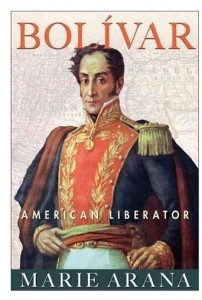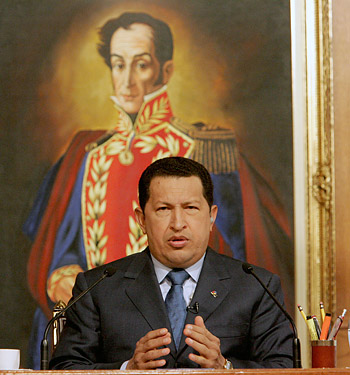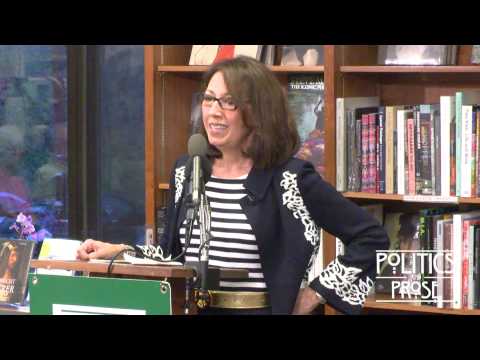What do Venezuela, Colombia, Panama, Peru, Ecuador. and Bolivia have in common?
Simón Bolívar (1783–1830) was president of each, often simultaneously, sometimes in turn.
Bolívar cropped up in a book about Jeremy Bentham’s crusade to influence events in South America. Bentham corresponded with Bolivar, that is, inundated him with manuscripts, letters, books, telling him what to do. When I read that, I was remind of how little I know about Latin America, and reading a biography of The Liberator seemed a good place to start. Though truck with Bentham made me doubt Bolívar’s judgement.

The first thing to hit me was that when Bolívar was born, the Spanish, including his family, had been in Latin America and the Caribbean for more than 250 years. That is far longer than the European settlement in Australia today.
The first Spanish settlers came on the second and third visits of Columbus a few years after that first landfall on 1492. That was a long time for people to get set in their ways, for the population to grow, for the natural wealth to be plundered, for social structure to map onto the topography, for the bureaucracy of empire from Madrid to develop arthritis, for the local Spanish to resent and yet to defer to distant Madrid. And the distance was measured in months of sea travel which was both uncertain and made dangerous by weather, politics, and pirates of the Caribbean.
Bolívar was born in Caracas in what is now Venezuela to a Creole family of wealth and social distinction. ‘Creole’ in this case refers to those Spanish who were born in Latin America as distinct from ‘Peninsulares’ who were Spaniards born on the Iberian peninsula. This distinction had social, financial, and political dimensions. Peninsulares were of higher status because they were closer to Spain. They escaped many taxes that applied to Creoles. They held appointed offices under the crown denied to Creoles. At one time, such differences might have made sense and might not have been resented but they were unchanged for 250+ years and they chaffed. The more so because those Peninsulares who came were often adventurers, thieves, and incompetents, each bearing a royal license that put them above the law.
The native indian population had either fled the Spanish who remained on the coasts or succumbed to the European diseases that came with them. To labor in the silver and gold mines, and later to work the sugar canes fields, the Spanish imported slaves from West Africa on a large scale and had been doing so for generations when Bolívar was born. Thus were three races mixed and while the sclerotic civil law took little notice of racial distinctions, the Roman Catholic Church did in regulating marriage, registering births, and legitimating inheritances. Racial purity was also a priority to the Creoles in their status war with Peninsulares. There were many varieties of pardos and mulattos, those of mixed race.
Bolívar was widely travelled, through the United States recently after its War of Independence, France shortly after the Revolution, England where he met James Mill, Italy, Spain, and elsewhere. In Spain, such was his family wealth and social status, he sported with Prince Ferdinand who became king during some of the period that followed. He had a tutor who spoke but the rights of man and talked but Rousseau and that ilk. Though Bolívar had no education to speak of, his head was full of ideas in a time when anything seemed possible. Born to a rich family, he never had an occupation of any sort.
A conflict between the reigning Spanish king and his ambitious son, Ferdinand, divided loyalties in Spain. Napoleon entered and placed one of this flunkies on the throne. The several colonies in the New World were even more confused than their brother French colonial officials would be in 1940 with the competing Vichy and Free French governments. Spain had three kings, the old king, his upstart son, and Napoleon’s puppet. In addition there were two rival juntas that each proclaimed the end of the monarchy and the birth of a new Spain. None had much capacity to influence the New World, but its riches were certainly what prompted Napoleon’s intervention, which in turn prompted the Monroe Doctrine in a few years.
There were many reactions among the colonists along the South American coasts as the news made its way to them, reported in English newspapers on American or British ships, since they dominated the seas.
In this confusing time Bolívar wanted both independence from Spain and a social revolution, though I doubt he translated that into the loss of his own fortune, though he did lose it. He was one of the most belligerent of the Creoles, and as efforts at moderation failed, because such capacity as Spain could project was repressive – no negotiation, just mass hangings. Several treaties between local Spanish officials and obstreperous Creoles were violated within the hour of signature, like the treaties the United States made with indians.
 One of many films featuring El Liberator
One of many films featuring El Liberator
I have no sense of Bolívar as a soldier. He had no training and his army was at most a few thousand. There are references to him training’s troops but I cannot guess in what he trained them. The terrain between the coastal colonies was forbidding, there being no roads, and simply moving a body of me from one to another was a feat of Hannibal.
He started with seventy men, surprised and routed a slightly larger Spanish garrison, and marched on with two-hundred men. By bluff and some confusion managed to cause another, larger Spanish contingent in a fortress to retire. Again he recruited more men, now at 500-hundred and marched on. This is another of his distinctions. He kept going. When other rebellious leaders scored a victory, they stopped. Not Bolívar. He was now about twenty-seven.
It is a long story with many failures, but Bolívar did not quit and in time learned from mistakes. The first lesson, was that it would be a long road.
Second, that the Latinos would have to do it for themselves. England would not intervene, though it would encourage from time to time to undermine its European enemies. The USA might be a model but it would not intervene either having neither the capacity nor will to do so.
Third, unity was the key to besting the imperialist, unity of the races, Creoles, pardos, mulattos, mestizos, blacks, and indians, and also geographic unity. He saw a single Latin American republic as the future. He opposed slavery and outlawed wherever he went which alienated the Creole slave-owning class of his origin.
Fourth, with a navy the Spanish could, at times, control the coasts, so better to operate from the interior.
Fifth, take allies where they can be found, and one place material support could be found was with the black regime in Haiti.
Sixth, compromise to amass a force. Do not insist on ideological purity from allies. Accept minimum cooperation if that is all there is.
Being a frail human being like all of us, El Liberator did not always follow these rules.
Since all the empires, French, Spanish, and English, constrained trade, the one place in the Southern Hemisphere where free trade was practiced was in Haiti. Several wealthy merchants from the United States had set up there to do business, and the offered funding, investing in future trading opportunities that would result if Spain was divested of its colonies.
Applying these lessons was not easy. Many fainthearted people wanted complete victory by the afternoon, or would quit. Others tried to woo England to no avail. The divisions among the Creoles and the ambiguous role of the Catholic Church, these alone would be enough to flummox most of us, let along crossing racial and geographic boundaries. There were no roads in the interior making movement nearly impossible. For some Creoles who had owned slaves, alliance with Haiti, a regime created when slaves massacred their owners, was impossible, even more impossible that freeing their own slaves.
That seeking of allies also came to mean trying to entice Spanish soldiers to switch sides with promises of citizenship and reward. His wars went on for more than twelve years as he criss-crossed the northern tier of South America in the belief that if the Spanish retained even one insignificant foothold, they would, sooner or later, return in force and subjugate the continent; it had to be a clean-sweep fore and aft. Alpine peaks in the Andes, swamps along the Orinoco, high deserts in Peru, jungle forests in Panama, endless plains, all these had to be traversed with his bedraggled followers. Nature and disease probably killed more than did the Spanish.
Bolivia, Ecuador, Panama, Columbia, Venezuela, and Peru, from these he drove the Spanish. The geography means nothing to me but on a map it is pretty impressive, putting George Washington’s campaigns into the shade.
There were constant conflicts among the locals, some remained loyal to Spain, but even among the anti-Spanish there were many deep divisions, social, racial, religious, regional, and political. Bolívar concluded that three hundred years of Spain’s authoritarian rule left the people incapable of ruling themselves. Though he adopted the forms of popular sovereignty, the governments, such as they were, he created were authoritarian, too. But he seldom stayed anywhere long enough to impose his will; he was always off to the next battle with another Spanish enclave. When he left, the government he had created fell to ruin and conflict.
His armies never exceeded 12,000 and were usually smaller than that. The wheel of death did not seem to phase him in the slightest. Over this period about half of the European population died. Add to that the deaths of blacks and reds and all the shades in between. Many deaths came from diseases for which we now have vaccinations, but even some them trace to the wars when water is contaminated, or populations re-located, or the dead are left unburied. Perhaps 50,000 soldiers died under his command. Of course, that is one battle for Napoleon.
Though the author describes many battles, it is all too much like a game. As far as I could tell Bolívar’s main tactic was to attack head-on. There is little indication he studied the terrain, disposed his forces according to it, tried to understand his opponents’ mind and play to a weakness, as did Robert Lee. Whatever tactical achievements there were, usually came from subordinates who also recruited soldiers of fortune from the demobilised armies of the Napoleonic wars with promises of citizen, land, and wealth. British and French veterans who had fought at Waterloo entered his European legion as comrades. He also bought much war surplus weaponry from Europe after 1815.
The author does a nice job of contrasting Bolívar with San Martin, though she is very clearly of the Bolívar camp. Think I will read about San Martin next to get the rest of the story. Over a 48-hour period they had three private meetings, alone. We know nothing of their discussions, though inferences have been made from the subsequent letters and memoirs of each. Nonetheless, the author writes of these interviews as though present. A license too far, I thought.
For ten years Bolívar fought the Spanish coloniser from Peru to Venezuela and back and forth. When the Spanish finally left, he spent the next ten years trying to hold together Greater Granada, as he called it, consisting of Venezuela, Colombia, Panama, Peru, Bolivia, and Ecuador. As soon as he left one province, as he styled them, the conflict would start. No longer having the Spanish to fight, they fought each other, across provincial, later national, borders, between cities, and within cities.
While El Liberator still lived, Peru had three presidents in one week, the first assassinated upon taking the oath of office, his successor two days later so that third took office on Friday. In combinations of twos and threes the states he created made war on each other and still do.
Once the Spanish oppressor was vanquished, many people saw in Bolívar a would-be king, tyrant, dictator… and opposed his every step. So blind was their automatic reaction — think Fox News here — that they even opposed his efforts to resign, seeing in it a devious tactic to win recall. That makes about as much sense as does Sarah Palin. This opposition continues with the entry in Wikipedia which asserts in its opening paragraph that his aim was to secure personal fiefdoms. No doubt it will be edited by next week.
He died at forty-seven, aged decades beyond the years by the exertions of the soldier’s life. The author estimates he travelled 75,000 miles, most of it on horse or foot in Latin America. At death he was penniless, and outcast by the very people whom he had liberated from Spain, dying in the care of a retired Spanish diplomat in a remote location in Colombia.
In death he has been a reliquary for Latino political leaders to bask in the glory of El Liberator, Simón Bolívar. Whenever a regime wobbles, its president-for-life unveils another statue of El Liberator, most notably and recently the late Hugo Chavez.
 Chavez speaks
Chavez speaks
Though no one wanted him alive, Bolívar’s body has been dug up and divided among nations and moved several times, last by the aforementioned Chavez who also took his name for the country as the Bolivarian Socialist Republic of Venezuela. It seems there are no parks or plazas in the northern tier of Latin American without statue of El Liberator from Panama to Bolivia. It does not always work since Swiss hotels are fully occupied by such presidents-for-life.
I mentioned the egregious Jeremy Bentham above and also Montesquieu. One of the interesting themes in this story is whether the laws must be rooted in the society or must the laws be above and apart from the society, and this is a difference between Bentham for whom one-size, his, fits all and Montesquieu for whom the spirit of the laws is the spirit of the people. Intersecting with this argument is one about monarchy. Though Bolívar was unalterably opposed to monarchy, many of his allies and acolytes wanted to recruit a European prince to be king on the grounds that such an outsider, having no history and no loyalty to this faction, region, or race, could defend a constitution against the ebb and flow of local politics. It is an argument Georg Hegel made in his ‘Philosophy of Right’ (1821). That did not work well for Max in Mexico a generation later.
The last chapter is a superb summary of El Liberator’s life and career.
——————-
The book is based on extensive research and is written with panache, and of course, the basic story is both an epic in scale and a saga in duration. I read some of it with the Times of London Atlas open to the relevant page to follow some of the action since most of the place names meant nothing to me.
 Marie Arana
Marie Arana
It is also true that the book lapses into hagiography too often for Saint Símon. It labels but does not explain, e.g., when others failed or quit Bolívar succeeded, why? Because he was charismatic comes the answer, which is no answer at all.
Some very strange word choice and some minor historical inaccuracy, e.g., there were no rifles and no artillery. The rifling of the barrels of weapons came later. There were muskets and cannons. It is quite a difference on each side of the barrel. When she writes of ‘riflemen,’ unless she specifically has Chuck Connors in mind, I think she means ‘infantry.’
Annoying overstatements, e,g,, these horsemen were the most audacious in the world. How does she know this. Was there a world horsemen audacity ranking agency?
At times the word choice made me wonder if the author, or translator, was a native English-speaker.
This is the first book I have read from beginning to end on a Kindle. It has taken getting used to, especially for notes and highlights and not losing my place. I started with turning off the public notes and highlights of other readers. No thanks. That is too much like reading a used book marked-up by previous readers. Bad enough reading some of the asinine reviews on Amazon.
Having carried about thirty kilograms of books on our European tour last year, I decided that I would not do that again. The only way to do that is to use a Kindle so I am practicing that before our next jaunt to Turkey in October.
Skip to content
